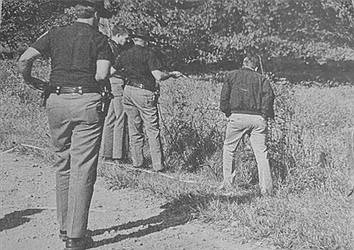Thrive, Turkeys! The Wild Turkey: A Modern Conservation Marvel
March 15, 2023 at 6:03 p.m.

Spring Turkey hunting season is rapidly approaching, and the DNR reports that turkey populations continue to thrive here in Indiana. This native North American game bird is a fascinating and important part of American culture and history. With its distinctive physical features, unique behavior, and rich cultural significance, the wild turkey is a truly remarkable bird worthy of admiration. The eastern wild turkey (Meleagris gallopavo sylvestris) played a seminal role in native North American culture for thousands of years, providing meat for food, feathers for arrows and clothing, and bones for tools and jewelry. As European settlers began to stake claim to the land, it was often the turkey keeping struggling colonies fed. Benjamin Franklin was a fan of the wild turkey, finding it morally superior to the Bald Eagle because the turkey did not steal food from other animals. Franklin called the turkey “a true original native of America.” The wild turkey is also an important part of the ecosystem, helping to control insect populations and providing food for predators.
And yet, in the early 1900's, the beloved turkey was under threat of extinction. Overhunting and habitat loss, among other ecological factors, had led to such a drastic decline that the species almost disappeared completely. In what has been called a “modern conservation marvel”, concerted efforts have helped to bring the population back from the brink of extinction. Trap–and–transplant programs have accelerated this growth since the early 1950s due in part to the invention of a cannon-fired net that could easily trap turkeys for relocation and repopulation of turkey-less areas. By 1990 wild turkey numbers hovered around 3.5 million birds across the continent. Today, DNR estimates nearly 7 million wild turkeys across North America, and all states but Alaska have huntable populations.
Here in Indiana, 2,795 wild trapped birds were released at 185 sites around the state between 1956 and 2004. Wild turkeys are now found in all 92 counties. Spring density over most of Indiana ranges from 1 to 14 birds per square mile, with an average of 4 birds per square mile in recent years. The Division of Fish and Wildlife maintains the following population management plan:
*Using only wild-trapped birds for restocking in suitable habitats.
*Providing sustainable spring and fall hunting opportunities .
*Providing technical assistance to private land owners on how to better manage their lands for wild turkeys and other wildlife.
*Conducting habitat management on public lands to enhance nesting and brood rearing habitat.
*Monitoring turkey population and harvest trends to ensure the sound stewardship of this natural resource.
Indiana spring wild turkey season starts April 26 and goes through May 14, 2023. Youth turkey season is April 22 and 23, 2023. The bag limit is one male or bearded turkey. The DNR reports that since the early 2000s, annual spring harvests have exceeded 10,000 birds with 50,000 to 60,000 hunters participating with an average hunting success of around 20% (1 in 5 hunters).
Latest News
E-Editions
Events
Spring Turkey hunting season is rapidly approaching, and the DNR reports that turkey populations continue to thrive here in Indiana. This native North American game bird is a fascinating and important part of American culture and history. With its distinctive physical features, unique behavior, and rich cultural significance, the wild turkey is a truly remarkable bird worthy of admiration. The eastern wild turkey (Meleagris gallopavo sylvestris) played a seminal role in native North American culture for thousands of years, providing meat for food, feathers for arrows and clothing, and bones for tools and jewelry. As European settlers began to stake claim to the land, it was often the turkey keeping struggling colonies fed. Benjamin Franklin was a fan of the wild turkey, finding it morally superior to the Bald Eagle because the turkey did not steal food from other animals. Franklin called the turkey “a true original native of America.” The wild turkey is also an important part of the ecosystem, helping to control insect populations and providing food for predators.
And yet, in the early 1900's, the beloved turkey was under threat of extinction. Overhunting and habitat loss, among other ecological factors, had led to such a drastic decline that the species almost disappeared completely. In what has been called a “modern conservation marvel”, concerted efforts have helped to bring the population back from the brink of extinction. Trap–and–transplant programs have accelerated this growth since the early 1950s due in part to the invention of a cannon-fired net that could easily trap turkeys for relocation and repopulation of turkey-less areas. By 1990 wild turkey numbers hovered around 3.5 million birds across the continent. Today, DNR estimates nearly 7 million wild turkeys across North America, and all states but Alaska have huntable populations.
Here in Indiana, 2,795 wild trapped birds were released at 185 sites around the state between 1956 and 2004. Wild turkeys are now found in all 92 counties. Spring density over most of Indiana ranges from 1 to 14 birds per square mile, with an average of 4 birds per square mile in recent years. The Division of Fish and Wildlife maintains the following population management plan:
*Using only wild-trapped birds for restocking in suitable habitats.
*Providing sustainable spring and fall hunting opportunities .
*Providing technical assistance to private land owners on how to better manage their lands for wild turkeys and other wildlife.
*Conducting habitat management on public lands to enhance nesting and brood rearing habitat.
*Monitoring turkey population and harvest trends to ensure the sound stewardship of this natural resource.
Indiana spring wild turkey season starts April 26 and goes through May 14, 2023. Youth turkey season is April 22 and 23, 2023. The bag limit is one male or bearded turkey. The DNR reports that since the early 2000s, annual spring harvests have exceeded 10,000 birds with 50,000 to 60,000 hunters participating with an average hunting success of around 20% (1 in 5 hunters).





